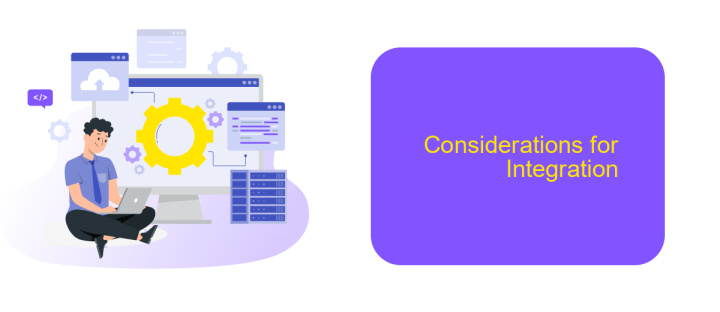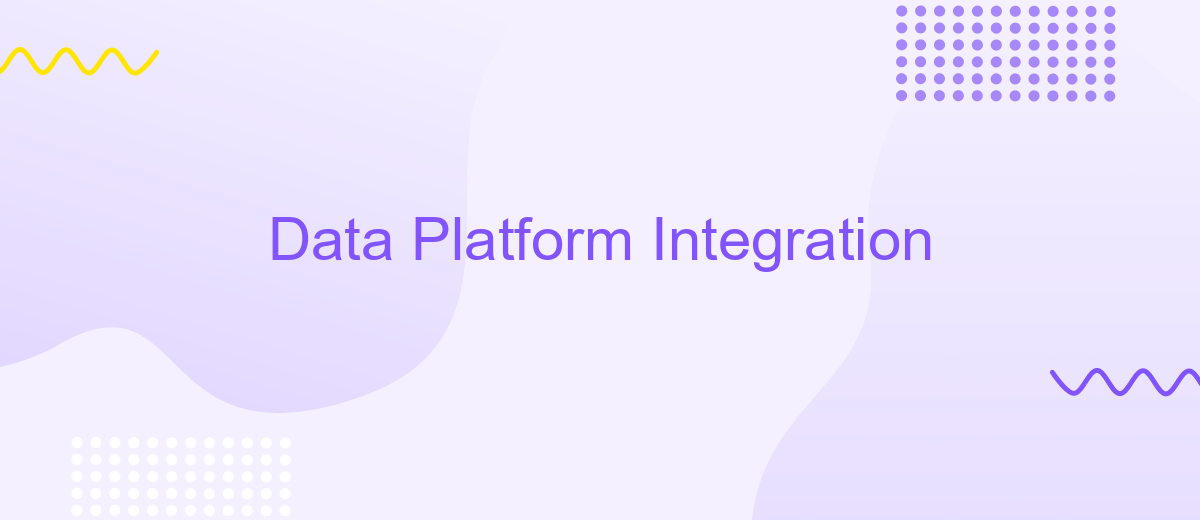Data Platform Integration
In today's data-driven world, seamless integration of data platforms is crucial for organizations aiming to harness the full potential of their data. Data Platform Integration enables the consolidation of diverse data sources, ensuring efficient data flow and accessibility. This article explores the key benefits, challenges, and best practices for achieving successful data platform integration, empowering businesses to make informed decisions and drive innovation.
Introduction
Data Platform Integration is crucial for modern businesses aiming to streamline their operations and enhance decision-making capabilities. By integrating various data sources, organizations can achieve a unified view of their data, leading to more accurate insights and improved efficiency.
- Unified Data Access: Integrating multiple data sources into a single platform provides a comprehensive view of business operations.
- Enhanced Decision-Making: A unified data platform ensures that decision-makers have access to real-time, accurate information.
- Operational Efficiency: Streamlined data integration reduces redundancy and manual data entry, saving time and resources.
Tools like ApiX-Drive facilitate seamless data integration by offering a user-friendly interface and robust connectivity options. With ApiX-Drive, businesses can automate data flows between various applications, ensuring that all systems are synchronized and up-to-date. This not only simplifies the integration process but also enhances the overall efficiency of data management.
Integration with Data Platforms

Integrating with data platforms is a crucial step for businesses aiming to streamline their operations and enhance data accessibility. Effective integration allows disparate data sources to communicate seamlessly, ensuring that data is consistent, accurate, and up-to-date across the organization. This process typically involves the use of APIs (Application Programming Interfaces) and ETL (Extract, Transform, Load) tools to facilitate the smooth transfer and transformation of data between systems.
One such service that simplifies the integration process is ApiX-Drive. It offers a user-friendly interface and robust functionality, enabling businesses to connect various data platforms without the need for extensive coding knowledge. ApiX-Drive supports a wide range of applications, making it easier to automate workflows and synchronize data in real-time. By leveraging such integration services, companies can significantly reduce the time and effort required to maintain data consistency, ultimately leading to more informed decision-making and improved overall efficiency.
Benefits of Integration

Integrating data platforms offers numerous advantages for businesses looking to streamline operations and enhance decision-making. By consolidating data from multiple sources, organizations can achieve a more comprehensive view of their operations, leading to more informed and timely decisions.
- Improved Data Accuracy: Integration reduces the risk of errors by ensuring data consistency across platforms.
- Enhanced Efficiency: Automated data synchronization saves time and resources, allowing teams to focus on more strategic tasks.
- Better Collaboration: Shared data access fosters collaboration among departments, driving innovation and problem-solving.
- Scalability: Integrated platforms can easily adapt to growing data needs, supporting business expansion.
- Cost Savings: Streamlined processes and reduced manual interventions lead to significant cost reductions.
Tools like ApiX-Drive simplify the integration process by offering seamless connectivity between various data platforms. This ensures that data flows smoothly and securely, enabling businesses to leverage their data assets effectively. In summary, data platform integration is a strategic move that offers substantial benefits, from improved accuracy to cost savings.
Considerations for Integration

When integrating a data platform, it is crucial to consider several key factors to ensure a seamless and efficient process. The integration should be designed to handle various data sources, formats, and volumes, while maintaining data integrity and security.
One of the primary considerations is the compatibility of the data platform with existing systems and applications. Ensuring that the platform can communicate effectively with other tools in your tech stack is essential for smooth data flow and operational efficiency.
- Data compatibility and format standardization
- Scalability to handle growing data volumes
- Security measures to protect sensitive information
- Real-time data synchronization capabilities
- User-friendly interface for ease of use
Utilizing services like ApiX-Drive can significantly streamline the integration process. ApiX-Drive offers robust solutions for connecting various applications and automating data workflows, ensuring that your data platform operates efficiently and effectively. By addressing these considerations, you can achieve a well-integrated data platform that supports your business needs.
Conclusion
In conclusion, the integration of data platforms is a pivotal component in modern data management strategies. By seamlessly connecting disparate data sources, organizations can achieve a unified view of their data, thereby enhancing decision-making processes and operational efficiency. The ability to integrate various platforms ensures data consistency, reduces redundancy, and facilitates real-time data access, which is crucial for maintaining a competitive edge in today's fast-paced business environment.
Utilizing services like ApiX-Drive can significantly streamline the integration process. ApiX-Drive offers a robust solution for automating data transfers between different platforms, minimizing the need for manual intervention and reducing the risk of errors. This not only saves time and resources but also allows businesses to focus on deriving actionable insights from their data. As the landscape of data management continues to evolve, leveraging such integration tools will be essential for organizations aiming to harness the full potential of their data assets.
FAQ
What is Data Platform Integration?
Why is Data Platform Integration important?
What are the common challenges in Data Platform Integration?
How can I automate Data Platform Integration?
What should I consider when choosing a Data Platform Integration tool?
Apix-Drive is a simple and efficient system connector that will help you automate routine tasks and optimize business processes. You can save time and money, direct these resources to more important purposes. Test ApiX-Drive and make sure that this tool will relieve your employees and after 5 minutes of settings your business will start working faster.

